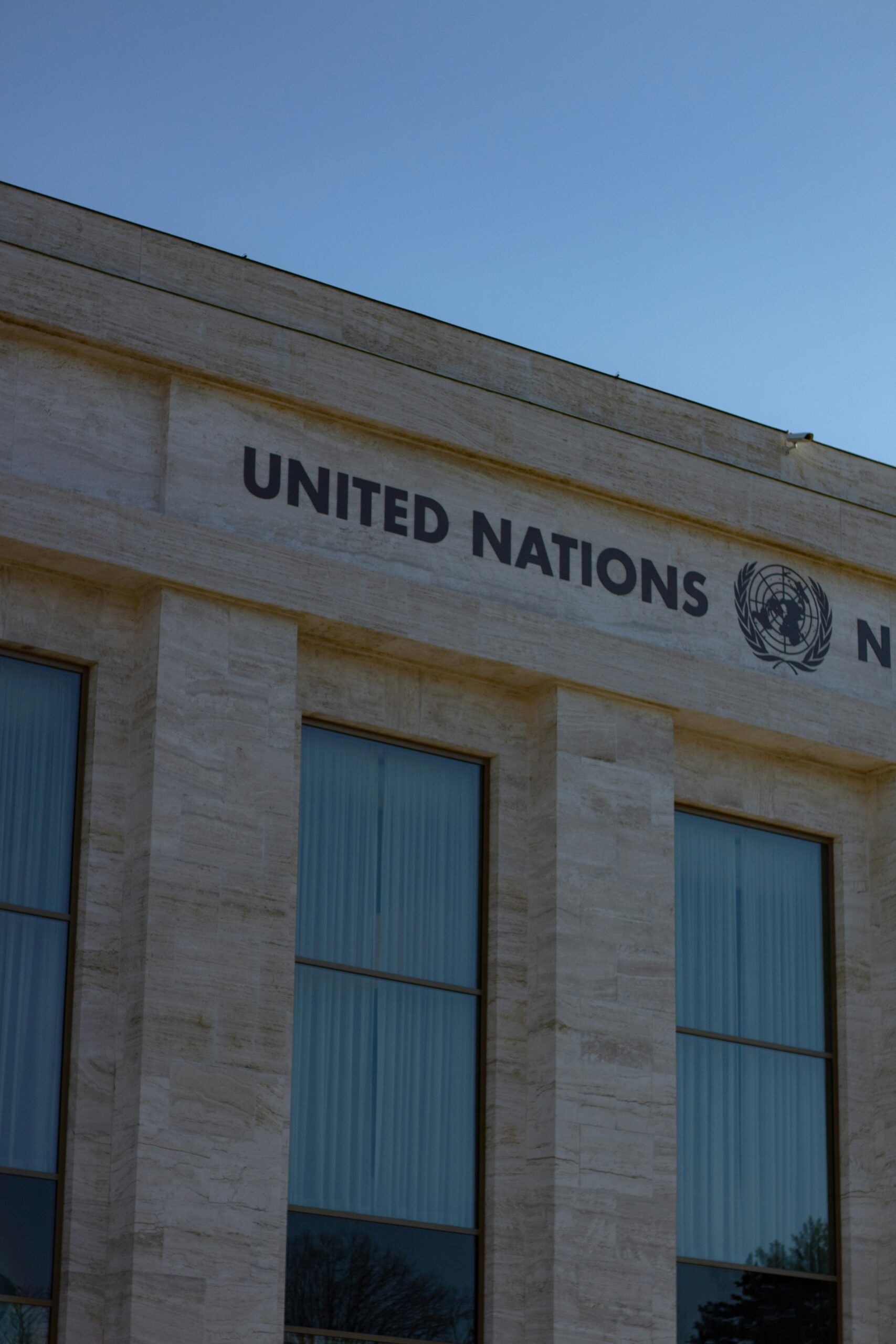More than two decades ago, the UN Secretary-General Boutros Boutros-Ghali in An Agenda for Peace highlighted the necessity of regional support “to lighten the burden of the Council.”
He called it “a matter of delegation.” One organization that has occasionally acted upon authorization of the UN Security Council (UNSC) is the North Atlantic Treaty Organization Council (NATO NAC). While both the UN and NATO share a “commitment to maintaining international peace and security,” reiterated during a meeting between Ban Ki-Moon and Jens Stoltenberg in this year’s UN General Assembly, the relationship between the two organisations has always been peculiar.
The many reports and debates where the UN addresses its relationship with regional organizations rarely mention NATO. This is somewhat surprising for two reasons. First, the UN-NATO relationship is a lopsided one that mainly benefits NATO. If regional action is indeed “a matter of delegation”, one wonders who in this relationship is actually delegating to whom. The Security Council, in its authorizations of NATO-led interventions, rarely explicitly delegates to NATO. For instance, in UNSC Resolution 1244, which is the legal framework for NATO’s KFOR operation in Kosovo, it authorized “Member States and relevant international organizations to establish the international security presence in Kosovo”.
The second reason touches upon a problem that reaches far beyond this single relationship. While UNSC delegation to regional organizations has long been uncontested, the current divisions within the Security Council have led to increased criticisms on the lack of control. Accusations of mandate violations, such as those in the aftermath of NATO’s 2011 intervention in Libya, have clearly highlighted the UNSC’s limited oversight of the operations it authorizes.
UN-NATO: Who’s Delegating To Whom?
Since 1992, the UN-NATO relationship has been stretched both geographically and thematically. While originally established for collective defence purposes, the gradual expansion of NATO’s “shared commitment” with the UN in a broad range of tasks was illustrative of the organization’s search for a new raison d’être following the end of bipolarity. In doing so, NATO has also moved beyond the Euro-Atlantic region.
In the field of peace enforcement, the UN provided authorization for NATO-led operations in the Balkans (IFOR, SFOR and KFOR), Afghanistan (ISAF), and ultimately in Libya (Operation Unified Protector). Likewise, NATO also provided training missions in Iraq (NTM-I). NATO’s thematic expansion became most obvious in its deployment of a relief mission following the 2005 earthquake in Pakistan, its support to the African Union’s AMIS mission in the Darfur region, and its escorts of vessels in the Gulf of Aden.
In the UN-NATO Joint Declaration of 2008, following the 2007 signature of the UN-EU Joint Declaration and the UN-EU Joint Statement, both sides have showed commitment to further cooperation and to formalizing their relationship in several interesting areas including information-sharing, capacity-building, lessons learned, planning, and operational coordination and support. But it took years to sign a document that in the end remained vague in content and strategy, and which has received little to no follow-up. Since its signature, information exchange is the only area that has been formalized by the creation of civilian liaison offices and regular meetings of both Secretary-Generals.
In their meeting in the margins of this year’s UN General Assembly, the two Secretary-Generals once again stressed the need for closer cooperation between both organizations, but one might wonder what would be the next crisis in which they will actually cooperate. Moreover, with the exception of NATO’s support for UN disaster relief in Pakistan and its support for the African Union in Darfur, it is doubtful whether this is in fact a truly cooperative relationship.
It can be argued that NATO still benefits most from the relationship. For instance, in operations involving the use of force, UNSC resolutions provide the required legal coverage and political legitimacy (at least in the early stages of its actions) to NATO’s operations. In addition, it has been argued that NATO’s peace support activities in Afghanistan would hardly have been possible without the support of the UN’s specialised agencies.
Mandate Compliance
Commentators have frequently indicated a problem with NATO “hopping in, and hopping out” of the UN Charter. NATO has always resisted being seen as one of many regional organizations falling under Chapter VIII of the UN Charter, a position primarily inspired by its reluctance to abide by the information requirement in Article 54:
“The Security Council shall at all times be kept fully informed of activities undertaken or in contemplation under regional arrangements or by regional agencies for the maintenance of international peace and security.
NATO’s resistance to Article 54 makes its actions difficult to control for those UNSC members that are not part of the North-Atlantic Alliance. As a result, the history of the UN-NATO relationship has strongly been characterised by discussions on NATO’s degree of mandate compliance. Such discussions are particularly pressing in instances where NATO implements mandates that deal with its key expertise: the use of force.
The most recent example is NATO’s 2011 Operation Unified Protector in Libya. UNSC Resolution 1973 authorized the use of all necessary means “to protect civilians and civilian populated areas under threat of attack” (Operative Paragraph 4) and “to enforce compliance with the ban on flights” (Operative Paragraph 8). However, accusations of mission creep quickly followed NATO’s deployment. Interestingly, these were voiced far beyond Russia, even among NATO’s own members such as Italy. Such accusations are not surprising given that NATO retains full political and operational control over operations decided by the NAC. Once having received UNSC authorization, NATO is de jure sanctioned by a UNSC Resolution while de facto autonomous in its operation. As one high-level NATO diplomat told me on the matter of getting a NATO operation authorized by the UNSC, the UN should be aware that “once you fire a shot, you cannot get it back into the gun”.
Operations such as the one in Libya are useful tools in blaming and shaming strategies. Jim Della-Giacoma has argued on the Global Peace Operations Review that “with the U.S. and Russia once again using the organization [UNSC] as a proxy battlefield, the ‘challenges to implementation’ are numerous.” In order to minimize the leeway for such diplomatic battles, these operations require careful decision-making. Even more crucial is a mechanism that would allow the UNSC to better monitor the operations it authorizes. Discussion of the capacities to control non-UN led operations raises another problem, however, as this requires consensus within the UNSC.
Flawed Monitoring Capabilities
The Libya experience seems to have sparked awareness among several UN member states on the importance of keeping the UNSC fully informed at all times. This was recently reiterated by the Brazilian Permanent Representative Antonio Patriota during the UN General Assembly’s Informal Dialogue on the Responsibility to Protect. Patriota stated that “we have a right to expect full accountability from those to whom authority is granted to resort to force”.
But the UNSC’s capacity to effectively control the operations it authorizes is in fact rather limited. In theory, when delegating interventions to non UN-led coalitions or other organizations such as NATO, the Council’s control capacities are limited to the reporting procedures included in the authorizing resolutions. In cases of a regional organization’s involvement, this implies a referral to Article 54 of the UN Charter. But often this is merely treated as a procedural detail, indicating a huge gap still exists between theory and practice.
NATO’s Libya intervention illustrated this in the strongest terms, and should be a thought-provoking case in that regard. When authorizing the creation of a no-fly zone, UNSC Resolution 1973 stated that “the Member States concerned shall inform the Secretary-General” and requested the Secretary-General “to report to the Council within 7 days and every month thereafter on the implementation of this Resolution”. Although Secretary-General Ban Ki-moon in December 2011 voiced the recurring argument that “This military operation done by the NATO forces was strictly within [Resolution] 1973”, the accusations that followed illustrate the monitoring problem the UNSC is facing. While the reporting provisions included in Resolution 1973 may have been the result of diplomatic efforts to gain the broadest support possible, it seems that the drafters were unaware of the consequences of these provisions.
Coming back to the UN General Assembly’s Informal Dialogue on the Responsibility to Protect, Antonio Patriota urged an introduction of a briefing system similar to that in peacekeeping operations, as well as the establishment of expert panels to monitor these interventions. How this might actually look in practice remains unclear. But what is certain is that, although numerous UNSC Resolutions oblige the executing coalition or organization to report to the UN Secretary-General, the SG does not have the means and structures to deal with this information in a constructive/operational fashion. So even if the information obligation in NATO’s Libya intervention had been met, it is highly doubtful whether the Secretary-General had the structure, the staff and the expertise to thoroughly assess such military information. Regrettably, the Libya legacy has not (yet) led the UN – either at the level of member states or within the Secretariat – to deeper reflection in that regard.
Ways Forward: Revitalizing The Military Staff Committee?
Is there any way forward for the UN on these issues? An overarching solution would be to craft more specific guidelines that are applicable to a broad range of organizations, including NATO. That should start with an inward-looking approach, addressing the UN’s own capacity to monitor the operations it authorizes. This issue was raised in the recently published HIPPO-report: “When the Security Council authorizes non-UN forces, it should establish requirements for reporting and accountability to the Council.” A problem however arises when dealing with operations that primarily focus on the use of force. Military officials shudder at the idea of being subjected to UNSC decision-making, as more political oversight might obstruct operational effectiveness. Yet those concerns should not stand in the way of an increased accountability for such operations.
Such accountability could be achieved by revitalizing the largely dormant Military Staff Committee. Although established as a subsidiary body of the UNSC, the Military Staff Committee is at present not doing what was envisioned through Article 47 of the UN Charter, i.e. to provide advice and assistance to the UNSC on all questions dealing with military requirements and the employment and command of forces put at its disposal.
The greatest advantage of a revitalized Military Staff Committee would be that it could guarantee follow-up of the reporting requirement and oversee operational accountability of non-UN-led operations. This could also have benefits beyond the subdomain of military interventions. It could provide the P5 with a means for more coordinated exchange of ideas among their military advisors, in order to bring about more realistic and achievable mandates for UN-led peace operations.
However, reinvigorating the Military Staff Committee is a decision that has to be taken by the UNSC itself, which is currently divided. Adding to the uncertainty of reaching such a decision, the P3 members will always keep their NATO membership in mind. And this brings us back to the peculiar UN-NATO relationship. Taken together, all of these considerations lead to the conclusion that installing an independent expert panel for guaranteeing monitoring, as recently proposed by Brazil, might not be a bad idea after all.
A Challenge For The Next UN Secretary-General?
What is clear is that the peculiar UN-NATO relationship reveals much wider challenges – not only to the relationship itself, but also to the UNSC’s position. It goes without saying that these challenges will probably not be solved in the coming year. But the next UN Secretary-General could take a step in the right direction by deducing an agenda from the 2008 UN-NATO Joint Declaration for implementing aspects that may benefit the work of the Council or the Secretariat.
Doing this will require a strong figure, one who is able to shift some of the position’s weight from merely being the chief executive officer. It will be a challenging endeavour, not only because the UN-NATO relationship highlights problems that are at the heart of the UNSC’s functioning. NATO’s manoeuvring room has largely been a deliberate choice by its key allies, those with a strong hand in the selection of the new Secretary-General. It remains to be seen what the effect will be on the UN-NATO relationship if that new UN Secretary-General comes from Eastern Europe.
Yf Reykers is a PhD fellow of the Research Foundation – Flanders (FWO). He has been conducting his research at the Leuven International and European Studies (LINES) Institute since October 2013. His research focuses on the relationship between the United Nations Security Council and regional organisations in peace and security related dossiers. | Twitter: @YfReykers


